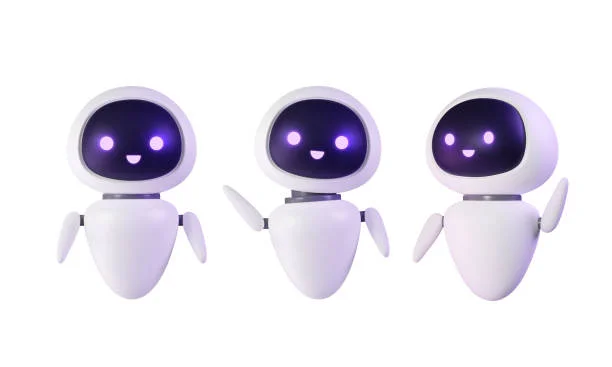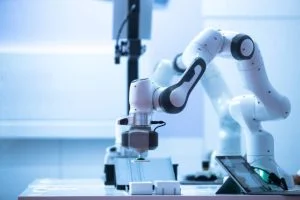Outlining the Concept of Robotics Technology
Human beings have constantly attempted to seek substitutes that are capable of imitating their behavior in different situations. This has led to the development of robotics which utilizes science, engineering, and technology to produce highly productive machines, called “robots”. It incorporates different technologies including artificial intelligence, computer science, mechanical engineering, and electrical engineering.
In the present digital era, there are different types of robotics designed to fulfill specific purposes. This includes industrial robotics, medical robotics, service robotics, underwater robotics, and aerial robotics. With the advancement in technology, robotics have been widely implemented across different sectors.
Technologies such as Artificial Intelligence can boost human-robot interaction. This can help robots identify and recognize objects they meet, learn precise navigation, and distinguish between different commands given It can also aid in better understanding of the surroundings, identifying and recognizing patterns, and comprehending data. These technologies can enhance the robot’s autonomy and decrease its reliance on humans.
Robotics is beneficial for businesses as it aids in reducing operating costs. It improves the productivity of the firm by consistently manufacturing high-quality products. Additionally, robotics reduces the wastage of material thus leading to increased product yield. It is capable of performing any task with a high level of accuracy and precision as compared to humans. It can also perform unsafe or dangerous tasks, thereby improving the safety of workers in different industries.
However, there are several disadvantages of robotics including higher cost of development and manufacturing, human job displacement, errors, and rise of ethical concerns in certain situations. Hence, it has become crucial to develop necessary policies and regulations to address these challenges.
Applications of Robotics Technology Across Different Sectors:
Manufacturing:
Robotics has transformed tasks that are repetitive or need higher precision. This has resulted in the development of Collaborative robots or cobots, used by different industries and work alongside humans to enhance workflow production. These robots can be referred to as articulated arms that are capable of performing different tasks including welding, painting, assembly line, and material handling in the manufacturing sector.
Logistics:
Robotics is capable of optimizing inventory management, packaging, and fulfillment of orders efficiently. It navigates through the warehouse, brings the right order, and delivers it to the right location, reducing the need for manual labor. This has accelerated the logistics process and enhanced customer satisfaction through timely deliveries.
Education:
Robotics has become a crucial tool in education as it provides students with knowledge about different domains such as programming, engineering, and problem-solving. It is also used for scientific exploration, studying the ecosystem and underwater environments, as well as animal behavior in their natural habitats. Robotics assist children in developing the basic cognitive skills at an early age. In addition, it engages with students through human-like facial features, appealing to their social nature.
Entertainment:
Robotics can captivate human attention with their performance in different events, exhibitions, and shows. For instance, social robots are designed for interacting with elders and children. These offer emotional support to humans and assist them with daily tasks. Entertainment robots can vary from model robots like Robosapien that react to sounds or running photo frames to heavyweight robots like articulated robot arms used as movement stimulators.
Environmental Monitoring:
Robots integrated with cameras and sensors are used for monitoring the environment. It is also used for collecting data regarding air and water quality in the surrounding and predicting the occurrence of natural disasters. In natural disaster-prone areas, robotics can help in searching and rescuing operations and navigating hazardous environments to locate the survivors.
Healthcare:
Robotics is widely utilized in the healthcare sector as it assists in surgeries and has minimum invasion, helping in fast recovery. For instance, robotic exoskeletons assist in rehabilitation and regain mobility by patients’ post-injuries. Additionally, telemedicine robots enable remote consultations that are significant in areas with limited medical access.
Aerospace:
Various Space Agencies use robots for the maintenance of spacecraft and planetary exploration. For instance, unmanned aerial vehicles (UAVs), also known as drones, are specialized robots that are capable of providing disaster notifications and have mapping applications. Additionally, it can be used to support astronauts with different tasks.
Service:
Robotics is highly utilized in service sectors such as malls, banks, and hotels. It helps in customer services such as providing information, guiding customers, answering queries, cleaning, and security patrol. Robotics is crucial for businesses in the service industry as it assists in improving customer experience and in-store operations.
Additionally, it offers contactless services with less cost and improved efficiency.
Also Read:
Robotic Process Automation Use Cases in Healthcare
How can Robotic Process Automation (RPA) Help in Finance Sector?


